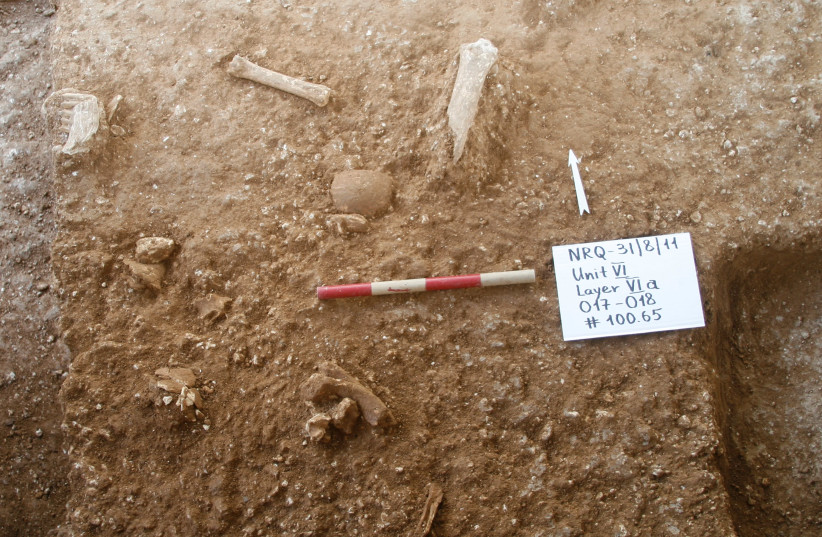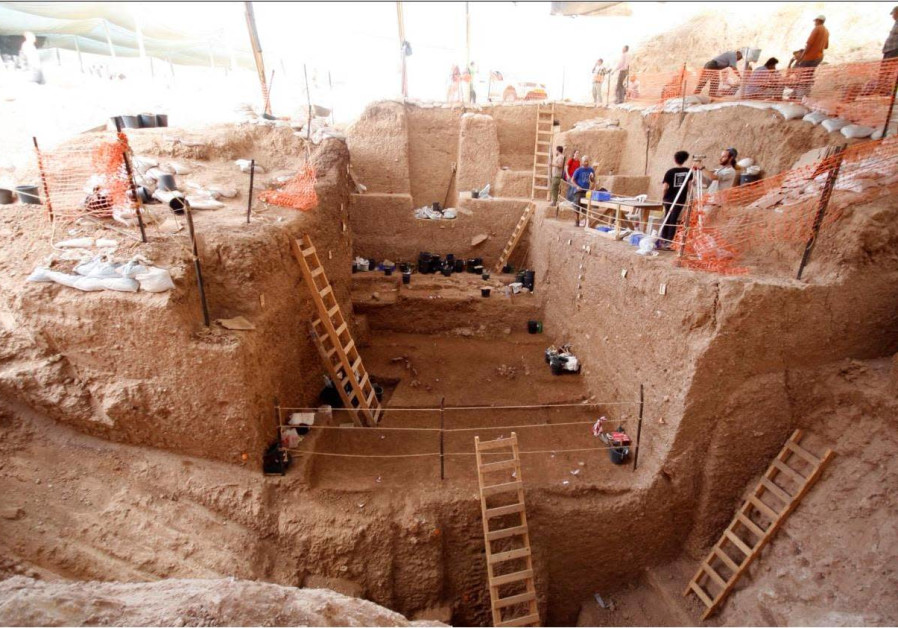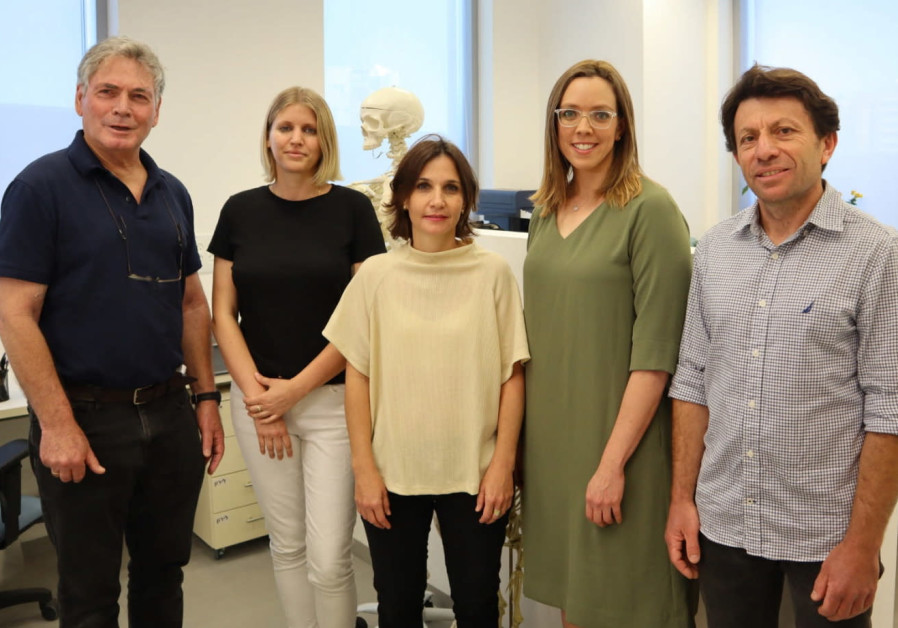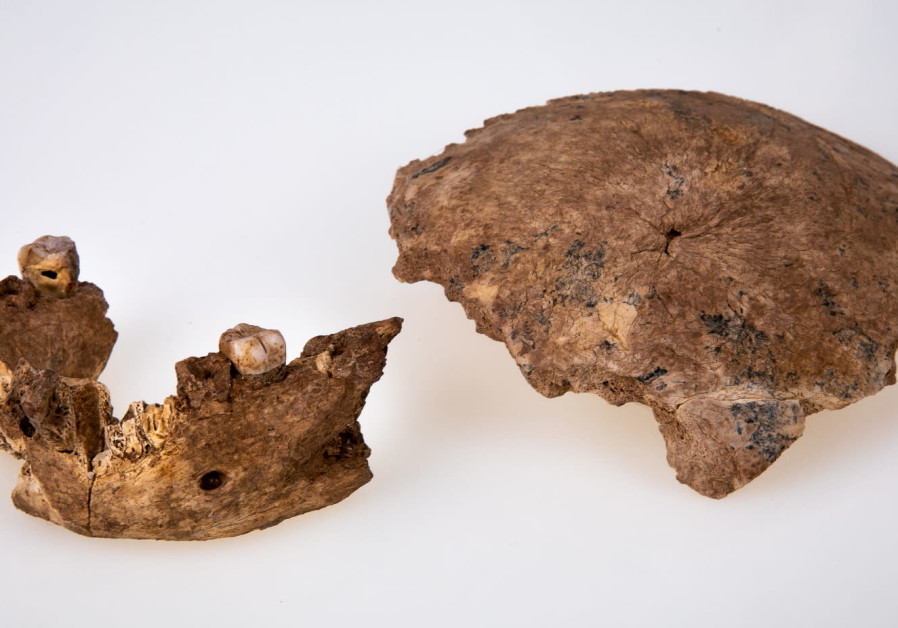New prehistoric human unknown to science discovered in Israel
Hebrew U and Tel Aviv University researchers found remains of a new type of ‘Homo’ who lived in the region some 130,000 years ago.
By ROSSELLA TERCATIN , the Jerusalem Post, JUNE 24, 2021

Skull found at the site among other items at Nesher Ramla.(photo credit: DR. YOSSI ZAIDNER)
A new type of early human previously not known to scientists has
been discovered in Israel, Tel Aviv University and Hebrew University
researchers announced Thursday as their extraordinary findings appeared
in the prestigious academic journal Science.
Researchers believe the new “Homo” species intermarried with Homo sapiens and was an ancestor of the Neanderthals.
Tens
of thousands of years ago, the busy central region of what is now a
densely populated and traffic-jammed part of Israel, was a landscape
that very much resembled the African savanna. It featured rhinos, wild
horses and cattle and other large animals that were perfect game for
ancient hunter-gatherers.
The
site of Nesher Ramla, a few kilometers from the modern-day city, was
probably close to a water reservoir where early humans could hunt
animals. Today, the dig site is filled with many animal bones, stone
tools for making fire and butchering, and human bones, including skulls,
TAU anthropologist Prof. Israel Hershkovitz said.
Dramatic discovery in Israeli excavation: A new type of Homo unknown to science
“We know that modern humans – or Homo sapiens – arrived in this area
some 200,000 years ago,” he said. “When we started excavating and
examining the different archaeological layers, we found that they dated
back between 140,000 and 120,000 years ago, so we expected to find
remains of Homo sapiens. We did not realize that another form of human
was living alongside them.”
The site was discovered during a salvage excavation led by Hebrew
University archaeologist Dr. Yossi Zaidner at the Nesher cement plant.
Israeli law demands that a salvage excavation be carried out alongside
any new construction project.
 Thick archaeological layers uncovered during the dig at Nesher Ramla. (Photo credit: Dr. Yossi Zaidner)
Thick archaeological layers uncovered during the dig at Nesher Ramla. (Photo credit: Dr. Yossi Zaidner)“This is an extraordinary discovery,” said Zaidner. “We
never imagined that alongside Homo sapiens, archaic Homo roamed the area
so late in human history.”
The
researchers believe that the newly discovered human type, which they
named after the site, lived in the region hundreds of thousands of years
ago and at least until 130,000 years ago.

The Nesher Ramla research team (Left to Right): Israel Hershkovitz, Marion
Prevost, Hila May, Rachel Sarig and Yossi Zaidner. (Photo credit: Tel
Aviv University)
Hershkovitz said it took a long time to determine that the bones they found indeed belonged to a hitherto unknown species.
“There was no ‘eureka’ moment,” he noted.
But
the findings may radically change what researchers have so far believed
about how ancient populations evolved and interacted, including how
sapiens and Neanderthal, other ancient human types, related to each
other.
“We have
shown that contrary to what was previously believed, the Neanderthals
are not a European story, but very much a story of the Levant,” he said.
Researchers believe the Nesher Ramla was an ancestor of the Neanderthals and other archaic Asian populations.
“Previously,
it was thought that Neanderthals arrived in [what is now] Israel around
70,000 to 50,000 years ago from Europe,” Hershkovitz remarked.
“However, now we are talking about a population living here some 130,000
years ago.”
Some
features of the remains, like the teeth and the jaws, were more similar
to Neanderthal species, while the skulls resembled the Homo type. But
something did not make sense.
 Fossil remains of skull and jaw found at Nesher Ramla. (Photo credit: Tel Aviv University)
Fossil remains of skull and jaw found at Nesher Ramla. (Photo credit: Tel Aviv University)When the researchers understood that the bones they had
retrieved did not belong to either a Neanderthal or a Homo sapiens, they
started to examine the possibility that they belonged to the last
survivors of a more archaic population that they thought had become
extinct hundreds of thousands of years earlier.
“We
started to look for other members of this population, and we discovered
that some fossils previously unearthed at other prehistoric sites in
Israel, including the Qesem cave, belonged to the same group,”
Hershkovitz said.
“We
therefore realized that we were dealing with a huge population that
lived in the region, and probably also migrated in different directions,
including in Asia and in Europe and later became the humans we know as
Neanderthal.”
According to Hershkovitz, Nesher Ramla Homo and Homo sapiens not only coexisted peacefully and exchanged technology, but also produced offspring.
“They
engaged culturally and biologically,” he said. “In Europe, the story
was very different because when modern humans arrived there around
45,000 years ago, they completely eliminated the local Neanderthals.
This did not happen here.”
“We
think that some later fossils we found in several caves dating back to
100,000 years ago probably belonged to offspring of sapiens and Nesher
Ramla,” he added.
For
example, in the Qafzeh cave in the Lower Galilee, archaeologists found
the remains of several humans presenting the features of both species,
some closer to the sapiens, some to the Nesher Ramla.
“It
is similar to what happens when we see that certain children look more
like their mother and some look more like their father,” Hershkovitz
noted.
The scientists were not able to extract any DNA from the fossils.
“Warm
weather destroys DNA,” Hershkovitz said. “In Israel, we have not been
able to find any preserved DNA from earlier than 15,000 years ago.”
For this reason, the researchers’ conclusions are based on the morphology of the bones found.
“People
think in paradigms,” said TAU Dr. Rachel Sarig. “That’s why efforts
have been made to ascribe these fossils to known human groups like Homo
sapiens, Homo erectus, Homo heidelbergensis or the Neanderthals. But now
we say: No. This is a group in itself, with distinct features and
characteristics.”
In
the past, geneticists had already suggested that an unknown population
represented the missing link between sapiens and Neanderthal, as pointed
out by another researcher, Dr. Hila May. The Nesher Ramla population
could represent the answer.
“As
a crossroads between Africa, Europe and Asia, the Land of Israel served
as a melting pot where different human populations mixed with one
another, to later spread throughout the Old World,” she added. “The
discovery from the Nesher Ramla site writes a new and fascinating
chapter in the story of humankind.”
THIS PAGE WAS POSTED BY SPUTNIK ONE HTTPS://DISQUS.COM/HOME/FORUM/THESPUTNIKSORBIT-BLOGSPOT-COM/
THIS PAGE WAS POSTED BY SPUTNIK ONE
HTTPS://DISQUS.COM/HOME/FORUM/THESPUTNIKSORBIT-BLOGSPOT-COM/
No comments:
Post a Comment
Stick to the subject, NO religion, or Party politics